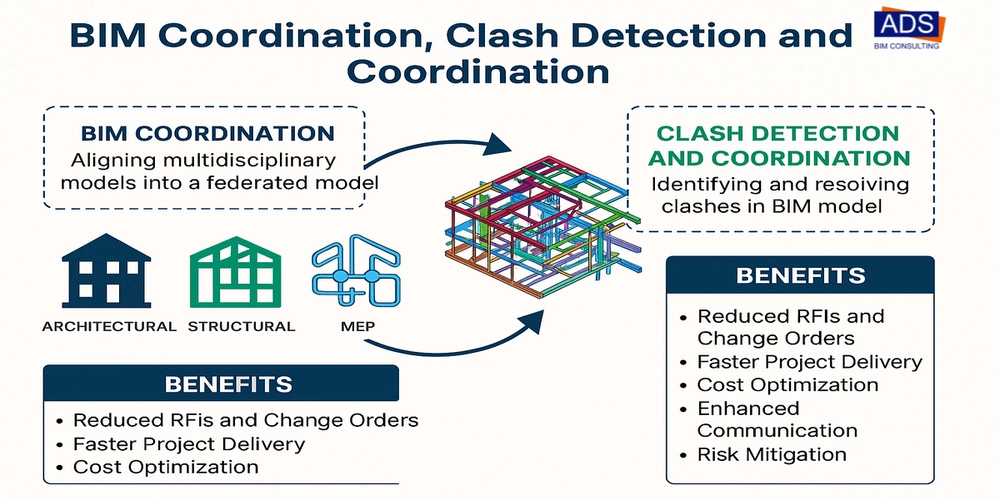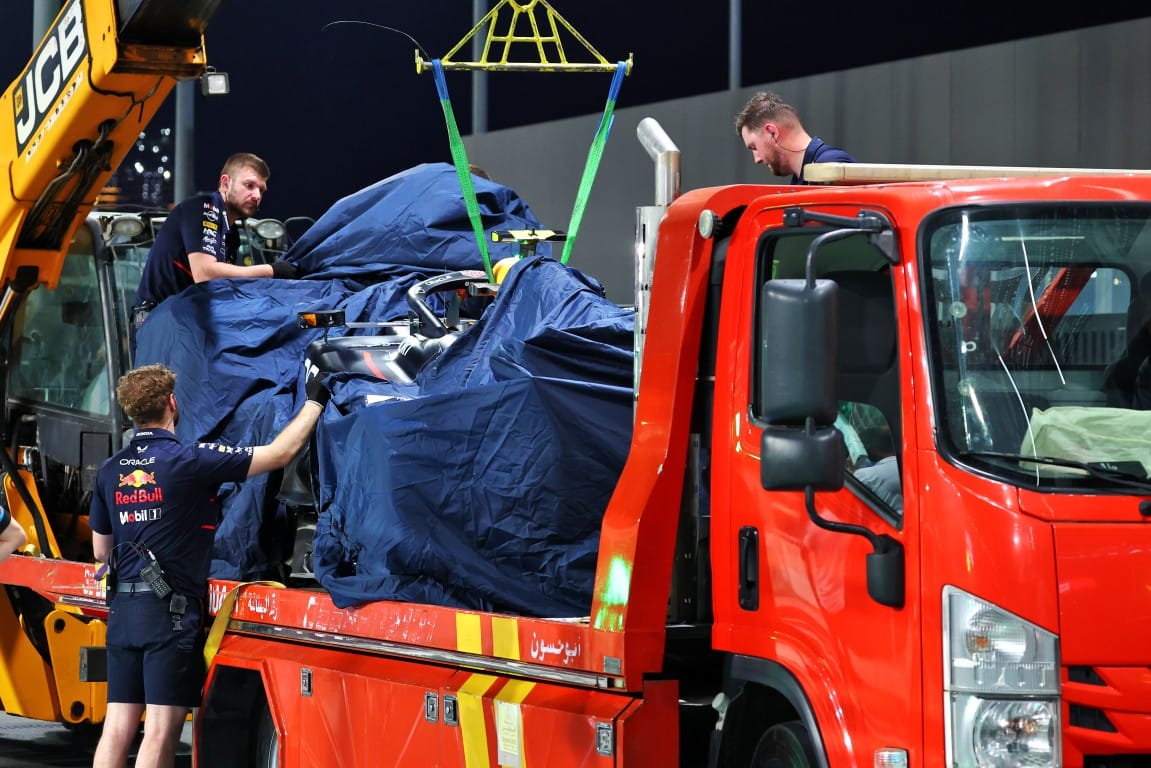BIM Coordination, Clash Detection and Coordination: Streamlining Construction with Precision
In today’s complex construction landscape, successful project delivery depends on efficient coordination and conflict resolution before a single brick is laid. BIM Coordination, Clash Detection and Coordination ensures that every component of a project – architectural, structural, and MEP systems – work in harmony. This proactive approach helps identify, manage, and resolve clashes during the pre-construction stage, saving valuable time and resources. What is BIM Coordination? BIM Coordination refers to the collaborative process of aligning design and construction elements within a digital 3D model. It enables different stakeholders – architects, engineers, and contractors – to work on the same platform and avoid overlaps, inconsistencies, or design conflicts. Understanding Clash Detection Clash Detection is a crucial feature of Building Information Modeling that highlights where different systems (like HVAC, plumbing, and electrical) intersect incorrectly within the model. Using clash detection tools like Navisworks or Revit, teams can resolve these issues virtually before they affect the actual construction timeline. Types of Clashes Identified: • Hard Clashes – Physical overlaps (e.g., duct passing through a beam) • Soft Clashes – Clearance or buffer space issues (e.g., insufficient maintenance space around HVAC equipment) • Workflow Clashes – Schedule or sequencing conflicts among teams The Role of BIM Coordination in Reducing Project Delays One of the major challenges in construction is unexpected delays caused by design errors or unresolved clashes between systems. BIM Coordination helps teams foresee potential issues by visualizing all elements in a centralized model. Clash Detection ensures that mechanical, electrical, plumbing, structural, and architectural components don’t interfere with one another—before actual construction begins. This proactive approach not only minimizes delays but also reduces overall project costs by cutting down on rework and material waste. Key Benefits of BIM Coordination and Clash Detection Cost Savings – Reduces on-site errors and expensive rework Faster Delivery – Prevents delays by resolving issues during the design phase Enhanced Collaboration – Promotes transparent communication among teams Improved Safety – Identifies unsafe design conflicts before construction Higher Quality – Ensures accuracy and constructability of the final model Industries Leveraging These Services • Real Estate Developers • General Contractors • MEP Engineering Firms • Architects and Design Consultants Avoid costly on-site surprises. Partner with ADS BIM for comprehensive BIM Coordination and advanced clash detection. Contact us today to streamline your next project. Frequently Asked Questions Q1: What software is used for BIM Coordination and Clash Detection? A1: We use tools like Autodesk Navisworks, Revit, and BIM 360 for accurate clash detection and coordination. Q2: At what stage should clash detection be done? A2: Ideally during the design development and pre-construction phases. Q3: How often should clash detection be performed? A3: It’s best to run clash detection after every major design update or milestone. Q4: Can clash detection help small projects? A4: Yes, even small projects benefit from avoiding design conflicts and delays. #BIMCoordination #ClashDetection #BIMServices #ConstructionTech #RevitModeling #MEPCoordination #DigitalConstruction #AECIndustry #DesignEfficiency ________________________________________ • Our BIM Services • Scan to BIM • Construction Documentation • BIM for Real Estate Developers

In today’s complex construction landscape, successful project delivery depends on efficient coordination and conflict resolution before a single brick is laid. BIM Coordination, Clash Detection and Coordination ensures that every component of a project – architectural, structural, and MEP systems – work in harmony. This proactive approach helps identify, manage, and resolve clashes during the pre-construction stage, saving valuable time and resources.
What is BIM Coordination?
BIM Coordination refers to the collaborative process of aligning design and construction elements within a digital 3D model. It enables different stakeholders – architects, engineers, and contractors – to work on the same platform and avoid overlaps, inconsistencies, or design conflicts.
Understanding Clash Detection
Clash Detection is a crucial feature of Building Information Modeling that highlights where different systems (like HVAC, plumbing, and electrical) intersect incorrectly within the model. Using clash detection tools like Navisworks or Revit, teams can resolve these issues virtually before they affect the actual construction timeline.
Types of Clashes Identified:
• Hard Clashes – Physical overlaps (e.g., duct passing through a beam)
• Soft Clashes – Clearance or buffer space issues (e.g., insufficient maintenance space around HVAC equipment)
• Workflow Clashes – Schedule or sequencing conflicts among teams
The Role of BIM Coordination in Reducing Project Delays
One of the major challenges in construction is unexpected delays caused by design errors or unresolved clashes between systems. BIM Coordination helps teams foresee potential issues by visualizing all elements in a centralized model. Clash Detection ensures that mechanical, electrical, plumbing, structural, and architectural components don’t interfere with one another—before actual construction begins. This proactive approach not only minimizes delays but also reduces overall project costs by cutting down on rework and material waste.
Key Benefits of BIM Coordination and Clash Detection
- Cost Savings – Reduces on-site errors and expensive rework
- Faster Delivery – Prevents delays by resolving issues during the design phase
- Enhanced Collaboration – Promotes transparent communication among teams
- Improved Safety – Identifies unsafe design conflicts before construction
- Higher Quality – Ensures accuracy and constructability of the final model Industries Leveraging These Services • Real Estate Developers • General Contractors • MEP Engineering Firms • Architects and Design Consultants Avoid costly on-site surprises. Partner with ADS BIM for comprehensive BIM Coordination and advanced clash detection. Contact us today to streamline your next project. Frequently Asked Questions Q1: What software is used for BIM Coordination and Clash Detection? A1: We use tools like Autodesk Navisworks, Revit, and BIM 360 for accurate clash detection and coordination. Q2: At what stage should clash detection be done? A2: Ideally during the design development and pre-construction phases. Q3: How often should clash detection be performed? A3: It’s best to run clash detection after every major design update or milestone. Q4: Can clash detection help small projects? A4: Yes, even small projects benefit from avoiding design conflicts and delays. #BIMCoordination #ClashDetection #BIMServices #ConstructionTech #RevitModeling #MEPCoordination #DigitalConstruction #AECIndustry #DesignEfficiency ________________________________________ • Our BIM Services • Scan to BIM • Construction Documentation • BIM for Real Estate Developers










































































